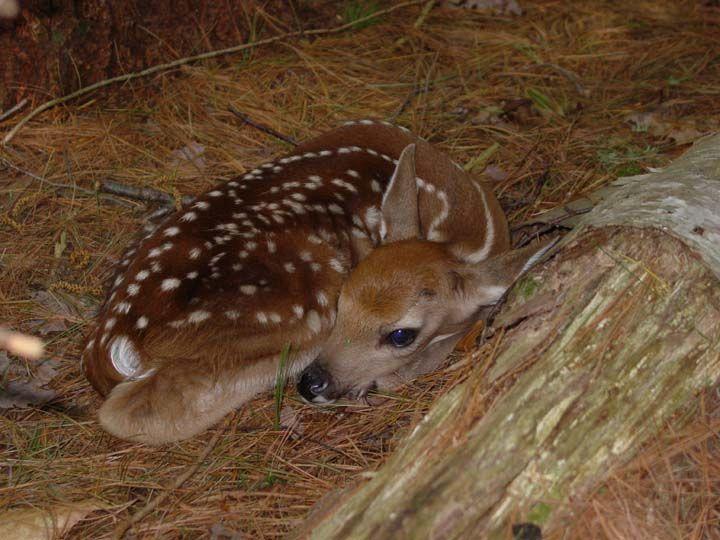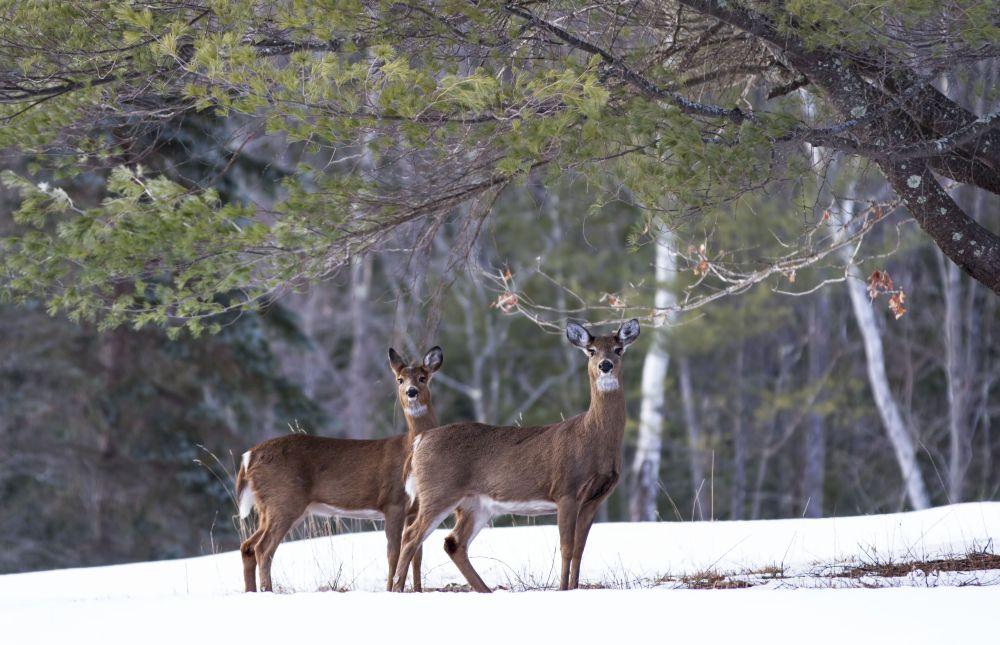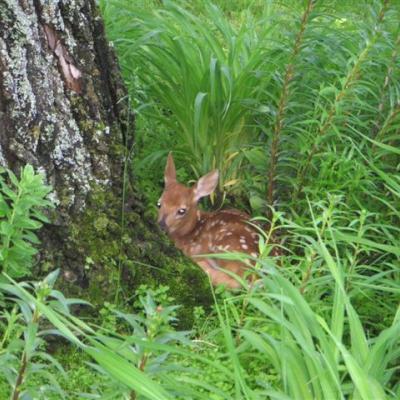Something Wild
- Tags:
- Wildlife,
- Something Wild

Cryptic coloration and no scent conceals deer fawns. Photo Geoff Jones
Fawn season is early June in New Hampshire Forests.
White-tailed deer give birth to cryptic-colored, white-spotted fawns by early June in New Hampshire. Does typically give birth to twins, rarely triplets. Younger does or in years of harsh winter weather with deep snow, more single fawns are born.
Does choose a secluded and yet open area to birth while scanning for any approaching danger. Moments after birth does will try to get fawns to stand and follow her to thick cover before she returns to consume the placenta. Fawns weigh 4 to 8 pounds at birth with no scent and a dappled white-spotted reddish coat. They remain motionless; hiding for up to 3 weeks while gaining strength and relying on cryptic camouflage to remain unseen. Does return only twice day to nurse and groom hiding fawns, consuming wastes to remove any scent.

The two essential first lessons for fawns: first – hide. Then - by one month old – run!
Many fawns are lost during their first 3 weeks to predators including coyotes, bears, bobcats and more rarely a fisher. In response to fawn distress calls, does rush to protect defenseless fawns from danger but more often must to abandon danger to survive themselves to breed again another year.
By three weeks old, fawns are strong and fast enough to accompany their mothers while nursing and foraging. Fawns remain with their mothers throughout the summer often in long-term maternal family groups raising fawns collectively for safety.

